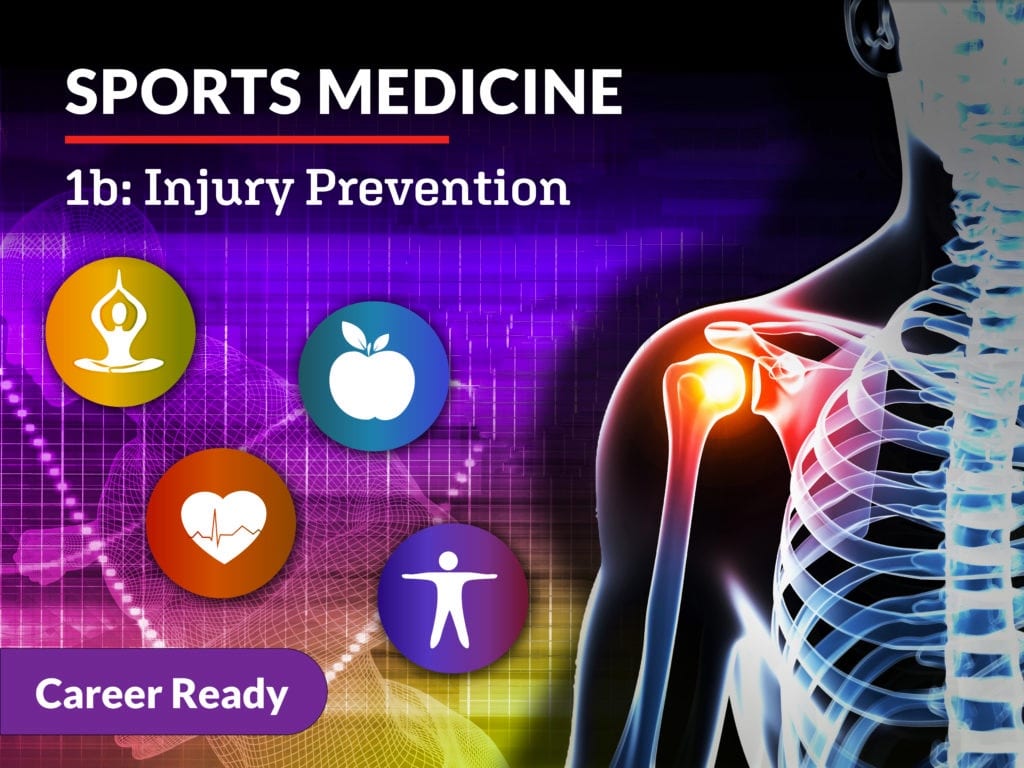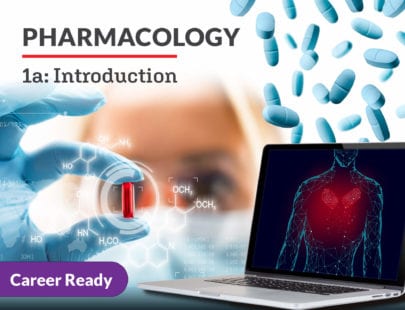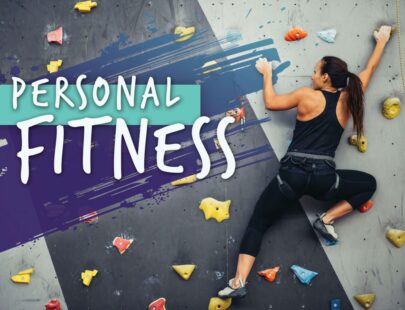
Sports Medicine 1b: Injury Prevention
You’ve warmed up those muscles and stretched your understanding of basic human biomechanics, but now it’s time to power forward your learning even further! In Sports Medicine 1b: Injury Prevention, you’ll expand your understanding of the human body to provide a greater context for injury in a variety of scenarios. You’ll learn how to evaluate an injury, onsite tests to perform, and when to refer a patient to a medical professional. You’ll also explore the anatomy of specific body areas to better understand injuries that may occur as well as ways to prevent injury. Are you ready to keep athletes functioning at peak levels? Grab your sports tape and let’s hit the field of sports medicine!
Units at a Glance
Unit 1: Body Organization
Have you ever watched as a professional athlete has suddenly had to leave the game due to a serious injury, or even simply wondered why a particular movement just doesn’t feel quite right? We are about to take a deep dive into the various types of injuries that can occur in the context of sports and workout accidents. In order to understand what is happening in any injury scenario and, better yet, how to prevent injuries, we first have to explore the organization of the body’s general anatomy, the interaction of muscles and joints, and the body’s relationship with the space around it. Incidentally, we can also use this information to inform different aspects of sports performance, such as the best angles to kick a soccer ball or the power used in throwing a baseball.
What will you learn in this unit?
- Use anatomical position, body planes, and directional terms to describe body locations
- Apply knowledge of joint types to specific body locations to better understand ways of limiting injury and moving correctly
- Evaluate joint actions and range of motion for more effective and efficient movement with reduced possibility of injury
- Assess muscle locations based on origins and insertions
- Understand muscles and tendons and apply this knowledge to improving movement abilities and reducing the risk of injury
Unit 2: From Muscle to Movement
Have you ever really thought about how you actually move? More than likely, you walk down the street without giving much thought to what goes into making your bones move. You know that bones come together to form joints, and ligaments hold those bones together. But, did you know that muscles attach to the bones that they want to move with a tendon, and as that tendon pulls the bone at its insertion, you move? In addition to the musculoskeletal system creating that movement, neurons must go to each and every muscle fiber to tell it to contract. This happens at a neuromuscular junction. We’ll take a close look at the intricacies of those contractions. There is a whole lot going on inside of muscles to create the movements you request, whether they are as simple as a walk down the street or as complex as hitting a homerun!
What will you learn in this unit?
- Apply knowledge of the structural components of muscle and muscle contractions to joint actions
- Use the muscle action spectrum to analyze everyday actions and specific actions in sports
- Understand how working out leads to the potential growth of muscle fibers in size and number
- Recognize various types of muscle fibers in relation to exercise and sports movements
- Relate the force-couple relationship to muscle actions to increase the effectiveness of workouts
- Analyze workout pain involved to determine when pain means gain or injury
- Determine the types of joint component injuries that may lead to unhealthy pain
Unit 3: Injury Assessment
No sports medicine course would be complete without a discussion on injuries and their prevention. When people move vigorously, they stand a greater chance of hurting some part of their body. If an object is involved—such as a bat, ball, or beam—the potential for impact and thus injury is increased. Collisions with people, such as on a soccer field, basketball court, or football field, are bound to cause, at the least, bumps and bruises and can easily lead to dislocated bones, sprained ligaments, or strained muscles or tendons. Underlying conditions and overuse can lead to injury in even the least athletic of people. Understanding injuries and their complications help the practitioner determine what assessments and treatments can be done onsite and when to call in the “big dogs.”
What will you learn in this unit?
- Analyze the contributing factors to injury and the prevention of injuries
- Assess the tissues involved in musculoskeletal injuries, such as bones, cartilage, ligaments, muscles, and tendons
- Identify the signs and symptoms of distress in the cardiovascular, respiratory, and lymph systems
- Determine how the peripheral nerves in the myotomes, dermatomes, and reflexes are tested to determine nervous system function
- Understand how balance and proprioception aid in identifying nervous system problems
- Perform analyses of patient injuries to refer them to other professionals or to treat them onsite
Unit 4: Soft Tissue Injuries
All tissues are not made alike. In face, the soft tissues include all of the skin, fascia, muscles, and tendons in the face as well as everywhere else in our bodies. Have you ever wondered how, when you have a cut the skin turns into a scab, then a scar, and then back to your normal skin? Stick around, just like your platelets, to see how this happens. Together, we’ll learn more about different types of wounds and infections, and how to best manage them for your athletes or patients.
What will you learn in this unit?
- Understand what soft tissue is and what makes up the skin
- Identify closed wounds and open wounds, as well as other soft tissue injuries
- Define the types of maladies that involve the skin, including infections and other skin conditions
- Explain the healing process of soft tissues, from wound to scar and back to normal tissue
- Determine the best treatment protocols for soft tissue injuries
Unit 5: A Pain in the Neck
Have you ever wondered why a pain beginning at the back of your head seems to move into your neck and then down into your shoulders? Sometimes it feels like the pain is moving into your forehead. You don’t have to do much to cause this pain, and many people don’t even realize the little ways they hold their head or shoulders can cause the issues. It is true that nerves cause pain, but if you better understand how the muscles move the bones of the head and neck, you might alleviate nerve pain and prevent injury. Let’s take a closer look at the bones and muscles in the face, head, and vertebrae to determine the injuries that happen and how you might best assess the problem.
What will you learn in this unit?
- Locate the bones of the face, head, and spine
- Establish the actions of the muscles of the face, head, and spine
- Characterize the types of injuries that occur to the face, head, and spine
- Distinguish types of injury to the head, neck, and spine based on signs and symptoms of the injured person and the manner of injury
- Determine a path to recovery for the injuries to the face, head, and spine
Unit 6: Chest and Abdomen Injuries
The chest and abdomen contain many of the body’s most vital organs. Protecting them should be a major concern for all athletes, especially those who play contact sports or who might fall from higher than a couple of feet. However, in the heat of the hockey game, the crux of the wrestling match, or the thrill of the double-twisting double-layout dismount on bars, the athlete may forget to protect their body while going for the win. When these situations happen, a professional is needed to assess the hit or the fall and the damage that resulted to the injured body. Before that professional gets their title, however, they need to know about a few very important organs in the chest and abdomen and their reactions when they are battered and bruised.
What will you learn in this unit?
- Identify the bones and ligaments of the chest and abdomen to ascertain fractures and sprains in these areas
- Locate the muscles and tendons of the chest and abdomen that affect movement in these areas and may be strained or torn during extensive eccentric contractions
- Describe the organs and their locations in the chest and abdomen to reveal the potential dangers to injuries in these areas
- Determine the types of musculoskeletal injuries common in the chest and abdomen
- Understand the types and severity of injuries to the chest and abdomen
- Assess the injuries to the chest and abdomen using signs and symptoms to establish treatments that fit the severity of the injury
Unit 7: Upper Extremity Injuries
Sports injuries are common in the upper extremity. To determine what is hurt in a joint, a person must know the anatomy of the shoulder, elbow, and each of the finger joints. You might think that just knowing the bones and muscles would be enough to assess injuries and treatments. However, most of the injuries in the upper limbs occur to ligaments and tendons. These two stabilizing materials in the joints can be damaged in forceful actions and overuse. In addition, it is important to analyze the area of concern for nerve or blood vessel damage. Determining exactly what the issue is leads to a better treatment plan and, therefore, a more successful recovery.
What will you learn in this unit?
- Identify the bones and landmarks of the upper extremity
- Locate the muscles and determine the actions of those muscles of the upper extremity
- Establish the nerves and blood vessels of the upper extremity
- Determine the potential injuries of each of the joints of the upper extremity
- Assess the damage from the injuries of each of the joints of the upper extremity
- Analyze the best treatments for injuries in each of the joints of the upper extremity that will lead to the quickest and most complete recovery
Unit 8: The Lower Extremity
Picture the World Cup soccer match. The defending champions are moving the ball down the field in the last seconds. The star forward is running toward the ball for a big kick when a defender comes toward him at full speed. The forward plants his left foot and twists, pulling his right leg back for the kick of his life. As he moves in the twisted position, he feels a pop and an intense pain and goes down on the ground. The defender swoops in to steal the ball. Our star forward is out with a torn ACL, a torn meniscus, and a dislocated patella. Playing a sport he loves may be over with this career-ending injury…or, with the proper assessment and treatment, he may be back on the field in a year or less!
What will you learn in this unit?
- Find the bones, landmarks, and ligaments in the joints of the lower extremity
- Locate the muscles and tendons that move the joints in the lower extremity
- Identify the nerves that innervate the muscles and the blood vessels that serve the tissues of the lower limb
- Characterize the sports injuries that are common in the joints of the lower extremity
- Recognize the procedures for determining what tissues are injured in a joint so that they may be applied when injuries occur
- Understand what treatments are best for the various injured tissues in the lower extremity
Required Materials
Physical
- Video recording device
- Camera
- Athletic tape (or appropriate substitution)
- Various props (Legos, paper, rocks, etc.)
- Household objects to create a splint and a sling
- ACE bandage (or anything that adds compression)
Software
- Word processing software
- Presentation software
- Spreadsheet software
Other
- Friend or family member to act as model (or doll/stuffed animal)
Optional
- Workout gear for demonstration photos
- Exercise equipment (mat, towel, weight bench, etc.)



